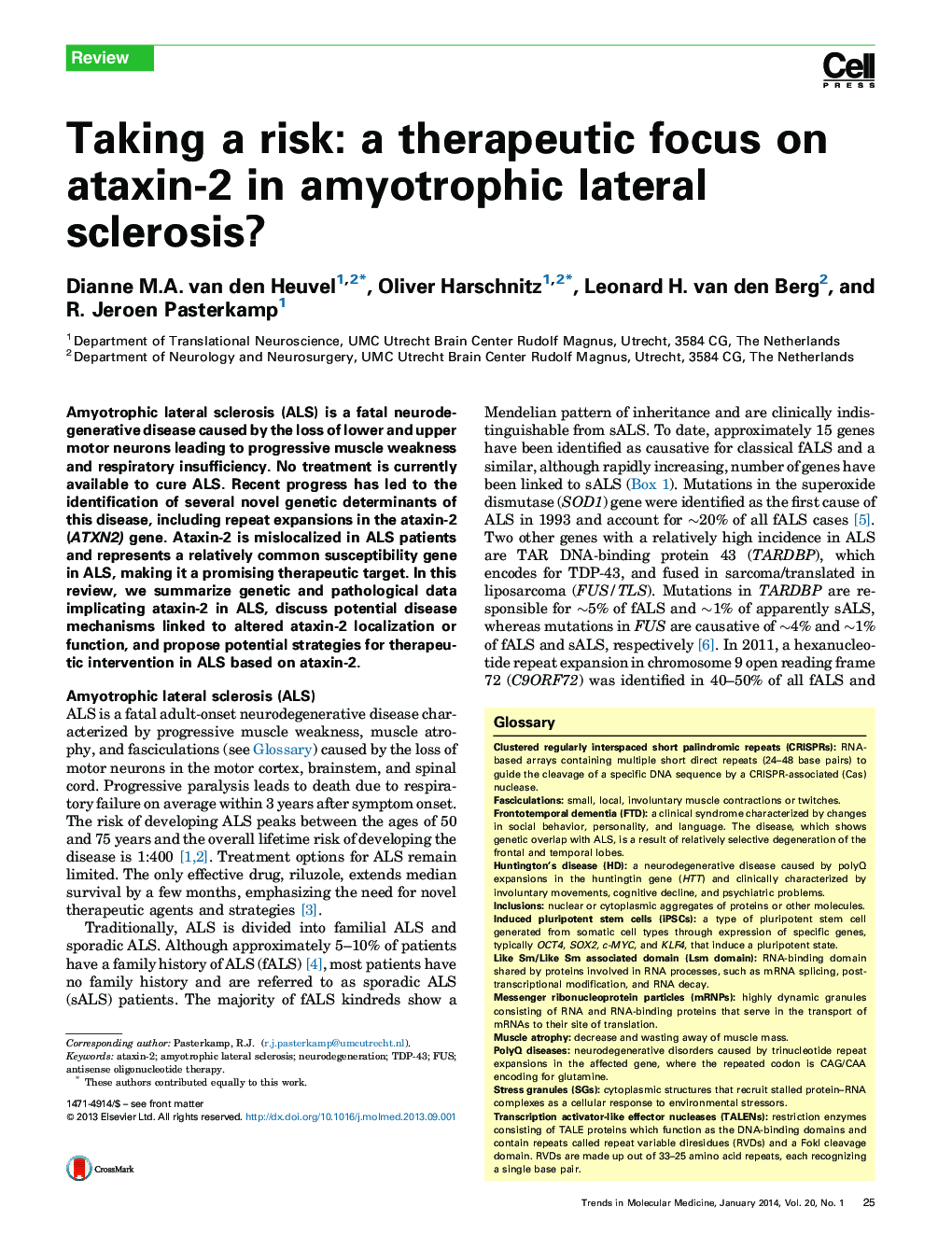| Article ID | Journal | Published Year | Pages | File Type |
|---|---|---|---|---|
| 2838644 | Trends in Molecular Medicine | 2014 | 11 Pages |
•Intermediate polyQ expansions in ataxin-2 are strongly associated with amyotrophic lateral sclerosis (ALS).•Ataxin-2 plays a central role in RNA biology.•Ataxin-2 is a toxic modifier of TDP-43 and FUS pathology in ALS.•Ataxin-2 is a promising therapeutic target in ALS.
Amyotrophic lateral sclerosis (ALS) is a fatal neurodegenerative disease caused by the loss of lower and upper motor neurons leading to progressive muscle weakness and respiratory insufficiency. No treatment is currently available to cure ALS. Recent progress has led to the identification of several novel genetic determinants of this disease, including repeat expansions in the ataxin-2 (ATXN2) gene. Ataxin-2 is mislocalized in ALS patients and represents a relatively common susceptibility gene in ALS, making it a promising therapeutic target. In this review, we summarize genetic and pathological data implicating ataxin-2 in ALS, discuss potential disease mechanisms linked to altered ataxin-2 localization or function, and propose potential strategies for therapeutic intervention in ALS based on ataxin-2.
